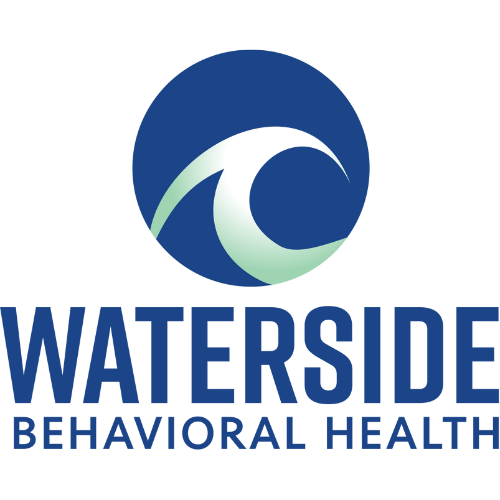When You’ve Tried Everything Else—And You’re Still Struggling
There’s a specific kind of exhaustion that comes from trying to heal and still feeling stuck. You’ve sat on the couch. You’ve journaled. Maybe you’ve told your story more times than you can count. And yet, the flashbacks still come. The panic still floods. The weight hasn’t lifted.
At Waterside Behavioral Health, we work with people who’ve been through the system—and are still searching. If you’ve ever thought, “I’m doing everything right, so why do I still feel broken?”—EMDR therapy might be the shift you need.
EMDR Is Different—And That Matters
Eye Movement Desensitization and Reprocessing (EMDR) therapy is not just another way of talking through your pain. It works directly with how the brain processes memory and trauma. Instead of analyzing what happened over and over, EMDR helps your brain refile distressing memories in a way that no longer triggers a fight-or-flight response.
Using bilateral stimulation—typically eye movements guided by a trained therapist—EMDR targets the “stuck” parts of the brain that trauma often leaves behind. You don’t have to go into graphic detail. You don’t have to relive every moment. EMDR meets you in your experience, and helps the body and mind let go of the emotional charge.
Why Other Therapies Might Not Have Worked (Yet)
It’s not that traditional talk therapy is bad. It can be powerful. But for some, especially those with complex trauma, dissociation, or overlapping identities and stressors, talk therapy doesn’t always reach the parts of the brain where trauma lives.
Sometimes, the intellect understands: “It wasn’t my fault.” But the body still panics when a door slams. The heart still races when someone raises their voice. The nightmares still come.
That’s because trauma isn’t just a thought or feeling—it’s a physiological imprint. EMDR can reach what language alone can’t. It allows healing without requiring a linear narrative or perfect articulation. And for many people, that’s the difference between therapy that feels frustrating and therapy that finally brings relief.
What EMDR Therapy Feels Like
EMDR sessions are highly structured and move at your pace. There are eight standardized phases that include preparation, assessment, desensitization, installation of positive beliefs, and body scans to make sure residual distress is addressed. But the experience is always grounded in your safety and readiness.
A session might begin with identifying a troubling memory or emotion. Then, through guided eye movements or other forms of bilateral stimulation (like tapping or sound), your therapist helps your brain begin to reprocess the memory.
It might sound clinical, but many describe EMDR sessions as deeply emotional yet surprisingly empowering. You don’t have to “push through” or explain every feeling. You follow your brain’s lead, and your therapist stays with you every step of the way.
Who EMDR Can Help (Especially When Nothing Else Has)
EMDR is an evidence-based treatment for PTSD, but its benefits extend to a wide range of mental health concerns, including:
- Complex or developmental trauma
- Anxiety and panic disorders
- Depression
- Dissociative symptoms
- Grief and loss
- Body-focused symptoms (like somatic flashbacks or chronic pain tied to trauma)

At Waterside, we’ve seen EMDR support people who:
- Felt like therapy always hit a wall
- Experienced medical, religious, or identity-based trauma
- Needed something that works without retelling every story
If you’re a queer person dealing with dual diagnoses or someone who’s been told, “You’re treatment-resistant,” EMDR therapy may be the alternative that honors the complexity of what you’ve lived through.
You Deserve a Therapy That Works With Your Brain—Not Against It
Too many people give up on healing because traditional models didn’t work for them. EMDR offers another option—one that respects how trauma really works in the brain and body. And one that doesn’t ask you to keep reliving pain to feel better.
If you’ve tried therapy before and felt like it barely scratched the surface, it’s not because you failed. It’s because your brain might need a different way in.
At Waterside Behavioral Health, our EMDR-trained therapists in Plymouth, PA, are here to walk with you at your pace. No bright promises. Just grounded care, clinically supported strategies, and deep respect for your experience.
Frequently Asked Questions About EMDR Therapy
What does EMDR stand for?
EMDR stands for Eye Movement Desensitization and Reprocessing. It is a therapy that uses guided eye movements to help reprocess distressing memories and reduce their emotional impact.
How long does EMDR therapy take to work?
It depends on the person and the complexity of their trauma. Some people feel a shift within a few sessions. Others benefit from a longer course of treatment, especially if they are working through multiple layers of trauma.
Is EMDR safe for people with dissociation or complex trauma?
Yes. In fact, EMDR is often used to treat people with complex trauma and dissociation. A well-trained therapist will assess readiness and build stability before moving into memory reprocessing.
Will I have to talk about my trauma in detail?
Not necessarily. EMDR allows you to process trauma without needing to share every detail out loud. You can let your brain and body do the work, while staying grounded in the present.
Can EMDR be combined with other types of therapy or medication?
Absolutely. Many people use EMDR alongside other forms of therapy or medication. It works well as part of a comprehensive treatment plan.
📞 Ready to talk it through?
Call us at (774) 619-7750 or explore EMDR therapy near you in Plymouth. We’ll walk with you at your pace—because healing should be designed around you.




